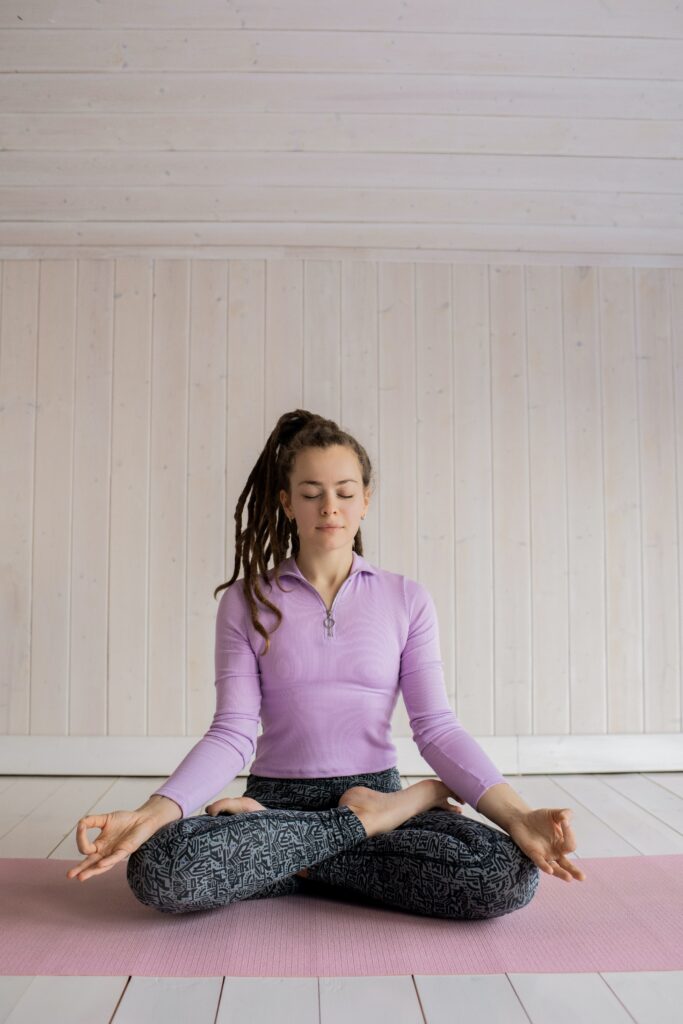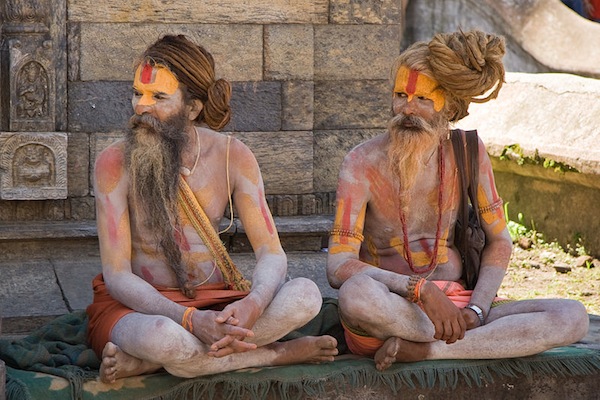The Lotus Pose: A Journey of Mind and Body

The Lotus Pose, also known as Padmasana, is a seated meditation posture that is commonly used in yoga and meditation practices. This posture is considered to be one of the most important and revered yoga poses, and is often associated with spiritual enlightenment and the attainment of inner peace.
The Lotus Pose is a seated posture in which the legs are crossed and the feet are placed on the opposite thighs. The posture is named after the lotus flower, which is known for its ability to bloom and flourish in even the most challenging of environments. This analogy is often used to symbolize the human potential to transcend difficulties and reach a state of inner peace and enlightenment.
The practice of the Lotus Pose requires a great deal of flexibility, strength, and patience. The posture requires the hips and knees to be open and the feet to be placed in a specific position. This can be challenging for many people, particularly those who are new to yoga or who have tight hips and legs. However, with consistent practice, the body can adapt and become more flexible over time.
The physical benefits of the Lotus Pose are numerous. The posture helps to increase flexibility in the hips and knees, as well as strengthen the spine and lower back. It also helps to improve posture and balance, and can be beneficial for individuals who suffer from back pain or sciatica. Additionally, the Lotus Pose is believed to stimulate the abdominal organs, which can aid in digestion and improve overall health.
Beyond the physical benefits, the Lotus Pose is also believed to have a profound effect on the mind and spirit. The posture is said to promote a sense of calm and stillness, which can be beneficial for those who suffer from anxiety or stress. The focus required to maintain the posture can also help to improve concentration and focus, which can be beneficial for individuals who have trouble staying focused or who suffer from attention-deficit disorder.
The Lotus Pose is also said to activate the manipura chakra, which is located at the solar plexus. This chakra is associated with personal power, self-confidence, and self-esteem. Activating this chakra can help to release negative energy and promote a sense of inner peace and self-acceptance.
The practice of the Lotus Pose is also believed to have a spiritual significance. The posture is said to help the practitioner to connect with the divine and attain a higher level of consciousness. It is said to help to quiet the mind, and to open the heart and crown chakras, which are associated with spiritual enlightenment.
The Lotus Pose can be practiced as part of a yoga or meditation practice, or it can be practiced on its own. It is important to remember that the practice of the Lotus Pose should be approached with patience and compassion, and should not be rushed. It is important to listen to the body and to work within one’s own limits. It is also important to remember that the practice of the Lotus Pose is not just about achieving the physical posture, but about cultivating a sense of inner peace and spiritual connection.
To begin the practice of the Lotus Pose, start by sitting on the floor with the legs extended in front of the body. Bring the right foot to the left thigh, and then bring the left foot to the right thigh. The feet should be resting on the opposite thigh with the heels pointing towards the body. The hands can be placed on the knees, or they can be placed in the lap, with the palms facing upward.
It is important to maintain a straight spine while practicing the Lotus Pose. The shoulders should be relaxed and the head should be held in a neutral position. The gaze should be directed forward, with the eyes closed or with a
soft gaze.
The Lotus Pose can be held for any amount of time, depending on the individual’s comfort level and flexibility. It is best to start with short periods of time and gradually increase the duration of the hold as the body becomes more accustomed to the posture. It is also important to listen to the body and to stop if there is any pain or discomfort.
It is also important to remember that the Lotus Pose should not be forced or rushed. It is important to work within one’s own limits and to gradually increase flexibility over time. There are also alternative seated postures that can be used as a preparation for the Lotus Pose. Half-Lotus (Ardha Padmasana) and Easy Pose (Sukhasana) are good options for those who are not yet ready for the full Lotus Pose.
In addition to regular practice, it is also important to incorporate stretching and hip-opening exercises into one’s yoga practice to help prepare for the Lotus Pose. Poses such as the Butterfly (Baddha Konasana), Pigeon (Eka Pada Rajakapotasana) and Lizard (Utthan Pristhasana) are all good options for opening the hips and preparing the body for the Lotus Pose.
In conclusion, the Lotus Pose is a powerful and revered yoga posture that can offer a wide range of physical, mental and spiritual benefits. It requires patience, flexibility, and consistency to master, but with regular practice, the body can adapt and become more flexible over time. Whether you are new to yoga or a seasoned practitioner, the Lotus Pose is a valuable addition to any practice, providing a sense of inner peace, self-awareness and spiritual connection. As a yoga expert, I recommend to start slowly and listen to your body, don’t push yourself too hard, and remember that the practice is about the journey, not the destination.


